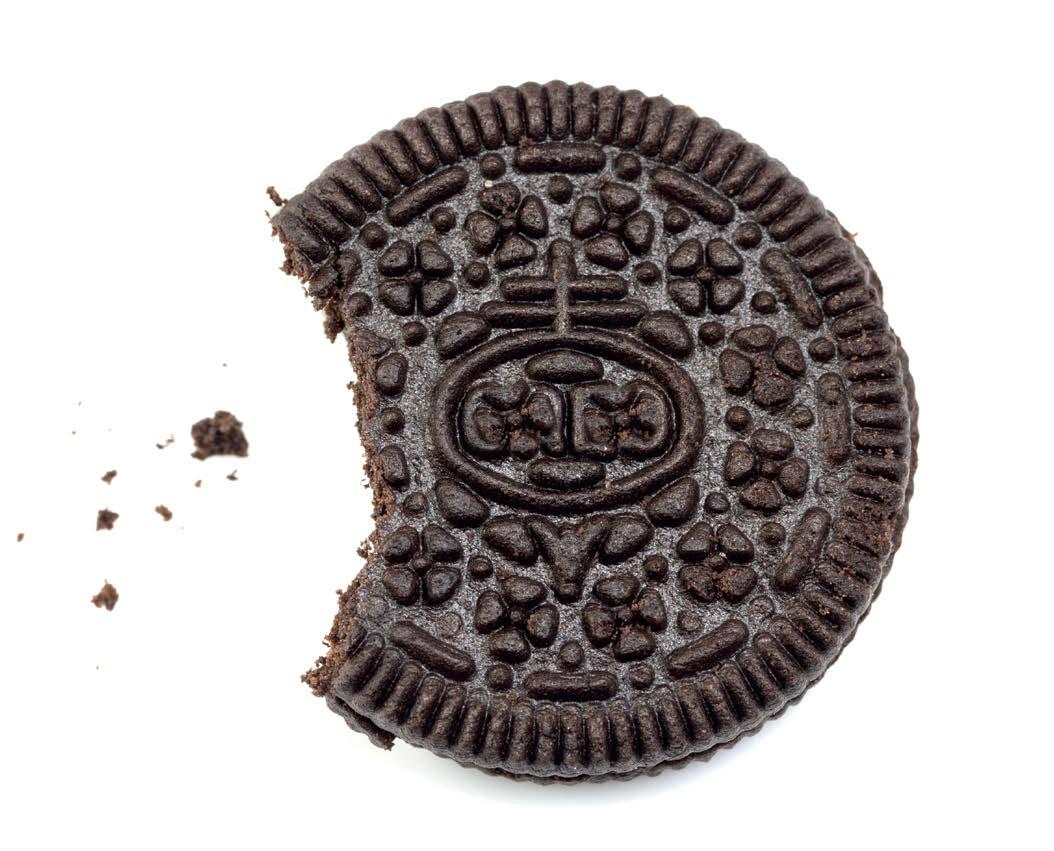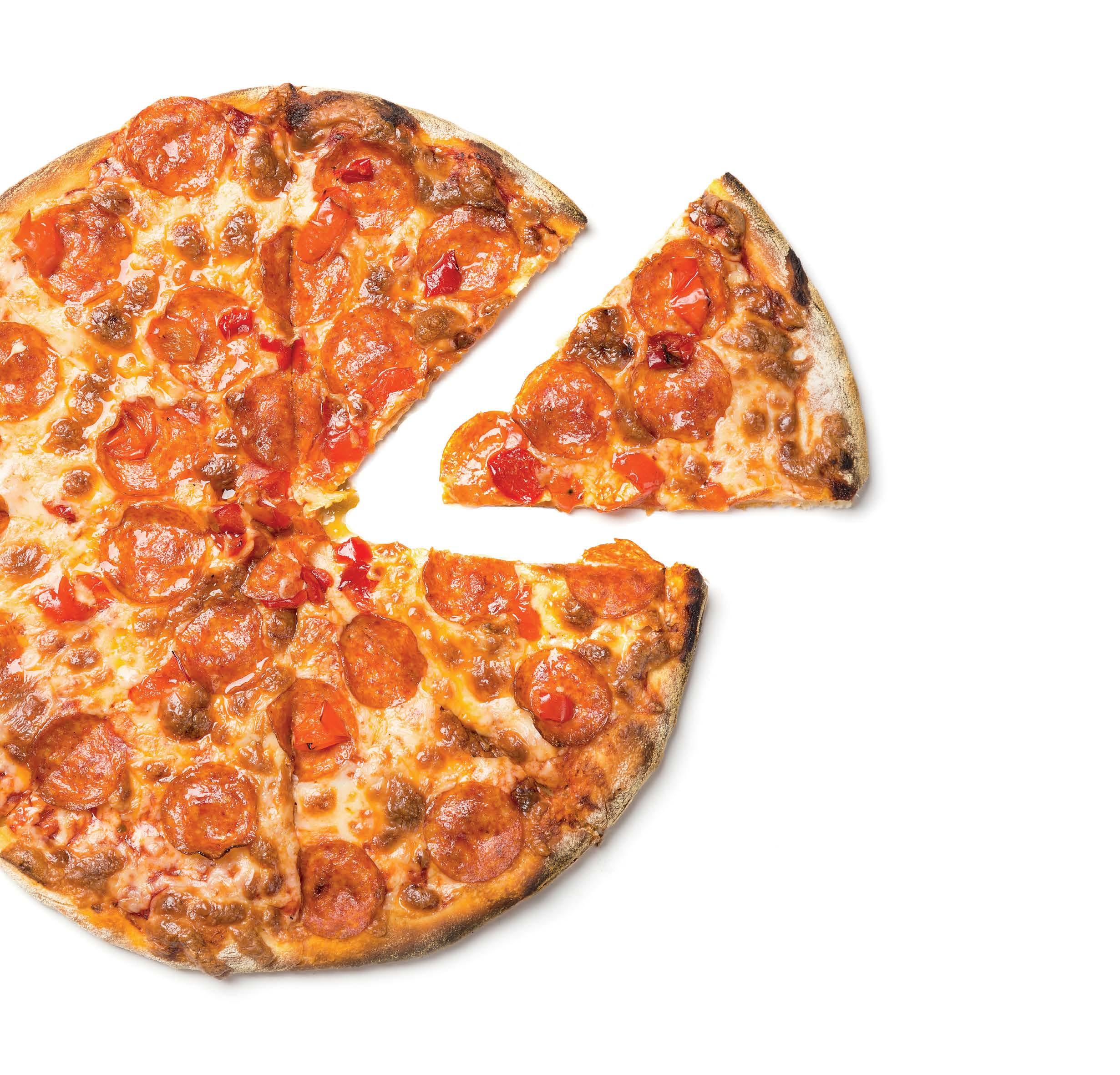
9 minute read
Are We Addicted?
Most of us have foods we crave so hard you’d think they were laced with nicotine. But can food really be as addictive as a drug? Or is it lack of self-control that has us polishing off that tub of Halo Top? We turned to experts in eating behaviours to help us determine the difference – and learn how to break the cycle for good.
WRITTEN BY KATELYN SWALLOW
Advertisement
We’ve all been there. Standing in the glow of the fridge light whispering “Just one more bite”, only to keep returning until that leftover birthday cake is nothing but crumbs. Before you fall into a shame spiral, know that you’re not alone. In fact, research suggests your tendency to overeat certain foods may not entirely be on you.
Chocolate desserts aren’t the only drugs of choice when it comes to foods that make us lose control – a 2015 study from the University of Michigan revealed that pizza, chips and ice cream also topped the list of foods we consider to be the most addictive (no surprises there). Beyond finding these foods extremely tasty, study participants found them the most difficult to pass up or eat in a controlled way: 92 per cent of the 518 people surveyed exhibited addictivelike behaviour to some foods, while around 10 per cent were diagnosed with a fully fledged addiction.
Okay, so chocolate isn’t exactly comparable to cocaine, and to suggest otherwise would be a stretch. But there’s no denying that particular foods (especially those that are highly processed and loaded with fat and sugar) are more likely to cause a problem for susceptible eaters. The question is: why?
Cravings vs addiction It’s important to examine the difference between just wanting a food because you enjoy the taste, and something more sinister. The definitions are still up for debate, so for now it depends who you ask.
Most experts agree that enjoying a food because it tastes good is normal, and those that are rich in sugar and fats happen to be more attractive to most taste buds. It’s hard to argue with the fact that melted cheese makes everything better, or that fries aren’t extremely satisfying. “It’s normal to like some foods more than others because of the taste, texture, smell, or the way it makes you feel,” says Emily Hardman, Accredited Practising Dietitian and eating disorders expert.
So it’s no surprise that cravings, or a more intense desire for a particular food, are also considered relatively normal. In some cases, says Nathan Baldwin, Accredited Practising Dietitian and intuitive eating advocate, a craving can be a positive thing, providing clues to nutrient gaps in your diet. “The body is very capable of telling us when it requires a particular type of food,” he says. “For example, people who consume low-carb diets will initially get very strong cravings for carbs.”
The problem is not in enjoying or eating a food we crave, but our ability to control how much we eat of it. And there’s evidence to suggest that certain foods actually override our natural feelings of being hungry or full, to have us reaching for it in ways that seem beyond our control.
“Food addiction is an eating behaviour that involves the overconsumption of highly palatable foods, which are often rich in fat, sugar, or salt, in quantities that are beyond a person’s nutritional requirements,” explains Hardman. “These foods trigger a reaction in the brain that induces feelings of pleasure and satisfaction, which, over time, can make a person addicted to these foods.”
Learn the signs While the topic is still controversial (food addiction is not yet recognised by the Diagnostic and Statistical Manual of Mental Disorders, one of two diagnostic manuals used by health professionals in Australia to diagnose mental illness), food addiction symptoms tend to parallel those of drug abuse, from dependency to withdrawal. Enter the Yale Food Addiction Scale, which helps pinpoint those who may be in the throes of a problem.
“The Yale Food Addiction Scale is a tool used to identify people who are exhibiting the signs and symptoms of food addiction,” notes Hardman, referencing the manual used as part of the aforementioned University of Michigan study. “The scale measures the extent There’s evidence to suggest that certain foods actually override our natural feelings of being hungry or full, to have us reaching for it in ways that seem beyond our own control.
Drugs of Choice These are the most addictive foods, according to the University of Michigan’s study:
1. Pizza 2.Chocolate 3.Chips 4.Cookies 5. Ice cream
These are the least addictive: 1. Cucumbers 2. Carrots 3. Beans 4. Apples 5. Brown rice
In your Feelings For some (okay, maybe more than some), a dependency on food is less about a physical addiction and more about filling an emotional void. “Low self-esteem, trauma and social isolation can trigger reliance on food to provide a psychological feeling of comfort and nurturing, better known as comfort eating,” says Psychologist Sarah Godfrey. “Feeling physically full can be a psychological metaphor for feeling as if you have a full life, while an empty stomach can trigger feelings of an empty life.”
that people binge on specific foods despite attempts to stop, whether the eating behaviours interfere with their lives, and if they experience withdrawal symptoms when restricting particular foods.” So how can you tell if you’re addicted? Signs of becoming dependent on food might include binge eating, persistent desires or obsessive thoughts about a particular food, eating to the point of feeling unwell, and emotional and/or physical feelings when trying to eliminate foods, says Hardman.
The unofficial nature of food addiction makes it difficult to understand how common it is. A 2014 observational study of over 130,000 men and women in the US found that nearly six
per cent of women met the criteria for food addiction. While this may seem like a relatively small number, it should be noted that women under 45 (a group at high risk of developing eating disorders) were not included as part of the report. Unsurprisingly, women were 16 to 18 times more likely to be food addicts if they were overweight, with a BMI of 35 or more.
The causes of food addiction are equally murky, with a combination of chemical dependency, emotional voids, and societal pressures often to blame.
Carb high Could food be producing the same reaction as a hit of Ecstasy? Sort of.


Recent studies do suggest that particular foods actually cause feelings of pleasure and satisfaction in very similar ways to recreational drugs.
Essentially the reward centres of your brain light up as the chocolate cake or handful of lollies makes its way to your stomach and, like many narcotics, cues the release of feel-good chemicals such as dopamine and serotonin. This reaction makes you even more likely to return to the food again at a later date – not so much a craving for the calories themselves, but for the rush. “Studies have shown that when we give rats sugar pellets, they no longer desire

healthy foods, and their dopamine and opiate levels dramatically increase,” explains Godfrey.
“Other studies on monkeys show that when given addictive foods such as chocolate, monkeys will hang in environments where the chocolate was given, rather than return to their normal environments, mimicking drug addiction behaviour.” Here’s the scary part: this behaviour lasted up to 15 days after the food was eaten.
Blame game But some experts, like Baldwin, don’t believe food addiction exists at all. “While some studies like to highlight similarities between the reaction certain foods and drugs have on the brain, there is no strong evidence to support claims that food ‘addiction’ should be treated similarly to drugs,” says Baldwin. Full disclosure: a systematic review of current food addiction literature tends to agree with him. A 2018 study concluded that while people do tend to reach for foods excessively,
“symptoms tend to better fit criteria for substance use disorder than behavioural addiction”.
So what’s our problem? For Baldwin, it’s the rampant misinformation mixed with body shaming in the media that’s largely to blame for our toxic relationship with what we eat. “Society paints particular foods, mostly high-calorie or nutrient-poor varieties, as very negative and morally inferior,” he says. “This causes ongoing cycles of food restriction, followed by bingeing, ensuing shame and guilt, before it repeats again and again.”
Clever marketing by major food brands also encourages us to associate certain foods with happiness, friendship, love and healthy lifestyles, even if the consumption of those products has no real connection with those desires, adds Godfrey.
How can you spot the difference between a craving and an addiction?
RECOVERY PROCESS
Even if you don’t have a diagnosed food addiction, understanding your eating patterns and behaviours, especially those that result in feelings of guilt or shame, can help you to feel more in control of your own body. For Baldwin, fighting any kind of negative behaviour is not about destroying the pleasure of food, it’s about practising positive behaviours to replace the ones causing you distress. “Be kind and compassionate with yourself, as learning these things and helping to improve your quality of life is difficult and takes time,” he says. “Rather than focusing on changing yourself by dieting and viewing yourself as broken or damaged, instead focus on understanding and honouring yourself.”
If you can’t get chocolate off your brain, it’s probably a craving. But if your relationship with it feels more like a dependency, or you exhibit out-of-control eating habits and withdrawal symptoms when you don’t have it, you may want to seek advice from a counsellor.
• Find other activities you enjoy. Finding activities that bring you joy and comfort will remove your emotional and psychological need to eat unnecessarily. “Some strategies that may be useful include deep breathing, spending time in the sun and fresh air, spending time with people you care about, or listening to peaceful music,” adds Hardman. • Avoid restrictive diets. Diets can often intensify the preoccupation with food. Instead, all of our experts recommend nurturing a better relationship with food, listening to natural hunger cues, and finding a more balanced approach. “Retrain your body and hypothalamus to ‘intuitively eat’, relying on signals of true hunger and feelings of being full,” says Godfrey. • Don’t deprive yourself. Cutting out addictive foods completely may do more harm than good. Believing you can’t have or aren’t allowed a particular food often increases your cravings. “Instead, create a balanced approach to eating by choosing nourishing foods most of the time, but allowing the foods you love here and there,” says Hardman. • Keep a food journal. Identifying the emotional and psychological triggers that have you reaching for addictive foods can help you become more aware of your behaviour, and find better ways to deal with it. Think anxiety, sadness, or stresses in your day-to-day life. • Invest in professional help. Isolation is a food addiction’s best friend, so try allowing someone to help fix the problem at its core. “A professional can help to unpack emotional and psychological issues associated with comfort eating and reliance on food,” says Godfrey. S










